I discovered the power of moral stories when my six-year-old nephew broke his grandmother’s favorite mug and couldn’t bring himself to tell the truth. Instead of lecturing him about honesty, I shared “The Boy Who Cried Wolf” during our bedtime routine. Within days, he came forward about another small mishap, explaining that he didn’t want to be “like the boy nobody believed.” That moment showed me how stories can shape young hearts and minds in ways that direct instruction simply can’t match.
I’ve found that short moral stories for kids are hands down the most effective way to teach valuable life lessons because they present complex concepts in fun, digestible formats that children can understand and remember. Stories don’t just entertain – they transform. When we choose the right moral tales for our children, we’re giving them tools to navigate complex emotions, difficult decisions, and challenging social situations.
Finding stories that truly resonate requires understanding what makes a moral story effective. Much like the carefully curated bedtime stories that help children wind down, moral stories need specific elements to achieve their educational goals.
What Makes a Great Short Moral Story for Kids
Look, I get it – you’re not going to sit there analyzing every story like it’s a thesis project. But here’s what I’ve learned works after testing countless stories with real kids (including some pretty tough crowds). Picking the right stories isn’t as simple as grabbing whatever looks good at the library.
Age-Appropriate Language and Themes
Here’s the thing about age-appropriate content: 4-year-olds need simple stories with clear good guys and bad guys. They want to see a magic paintbrush that stops working when someone lies, or a bird that needs help healing. Keep the vocabulary simple and focus on actions and consequences they can understand immediately.
By 7, kids can handle the messy stuff where nobody’s perfect. They’re ready for stories about peer pressure, cultural differences, and moral dilemmas that don’t have obvious solutions. Their expanding vocabulary allows for richer storytelling, but the core message still needs to be crystal clear.
|
Age Group |
Vocabulary Level |
Story Themes |
Ideal Length |
Key Elements |
|---|---|---|---|---|
|
4-6 Years |
Simple, concrete words |
Basic emotions, clear right/wrong |
100-200 words |
Magic, animals, simple consequences |
|
7-9 Years |
Expanding vocabulary |
Friendship conflicts, school situations |
200-350 words |
Relatable characters, problem-solving |
|
10-12 Years |
Complex concepts |
Peer pressure, cultural differences |
300-500 words |
Moral dilemmas, character growth |
Real-World Connection Points
The most powerful moral stories mirror situations your child encounters regularly. Does your daughter struggle with sharing toys? Stories about cooperation hit differently than tales about abstract concepts she’s never experienced. Is your son dealing with a classroom bully? Stories about standing up for others become immediately relevant.
I’ve watched children’s eyes light up when they recognize their own experiences in a story. Last week, my daughter came home upset about a playground incident, and I knew exactly which story we needed to read together that night. That recognition creates the emotional bridge between fiction and real life, making the moral lesson stick long after storytime ends.
Real-World Connection in Action: When 8-year-old Marcus was struggling with jealousy over his baby sister’s attention, his mother chose “The Thankless Princess” instead of a generic sharing story. The tale’s focus on appreciating what you have rather than focusing on what others receive directly addressed Marcus’s emotional state. After hearing the story, Marcus began pointing out things he was grateful for, especially moments when he got to be the “big brother helper.”
Natural Lesson Discovery vs. Heavy-Handed Preaching
Kids are smart. They know when a story is trying too hard to teach them something, and they’ll shut down faster than you can say “moral lesson.” The best stories plant seeds of understanding and allow young minds to draw their own conclusions. When a character faces consequences for their choices, kids naturally connect those dots without needing someone to spell out “the moral is…”
I’ll never forget the time my son asked me, “Mom, why did the character do that?” It hit me that he was really asking about his own situation at school. This discovery process creates ownership of the lesson. Instead of following rules because adults said so, children internalize values because they’ve seen how those values play out in stories they care about.
Cultural Sensitivity and Inclusive Representation
Modern children live in diverse communities, and their stories should reflect that reality. I look for tales featuring characters from different backgrounds, family structures, and cultural traditions while teaching universal values that transcend specific contexts.
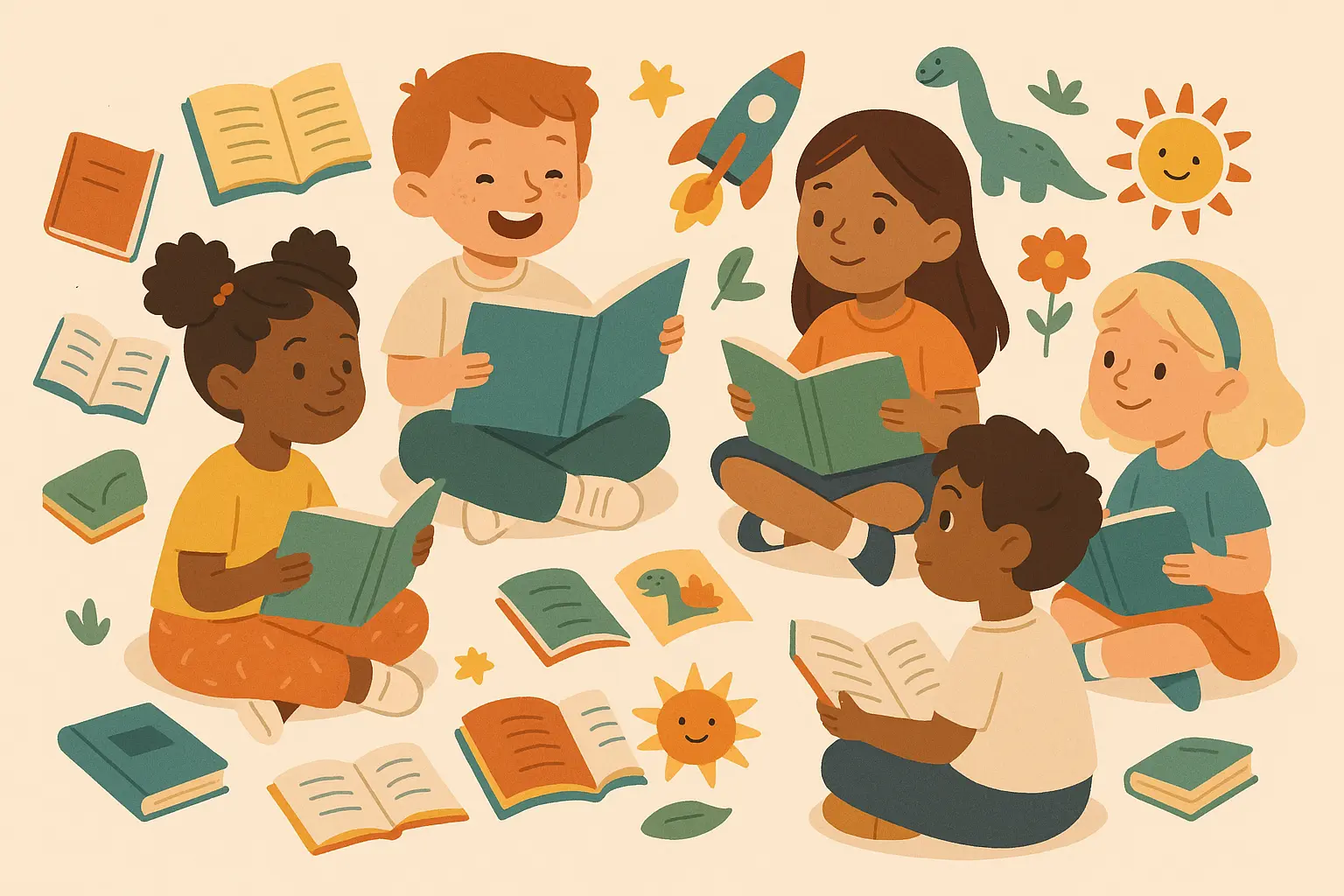
Inclusive stories don’t just represent diversity – they normalize it. When children see characters who look different from them making good choices and learning important lessons, they develop empathy and understanding that extends far beyond storytime. This approach mirrors the rich tradition found in folktales from various cultures, which have taught universal values across generations.
Emotional Engagement Through Memorable Characters
Here’s what I’ve discovered: characters your kids will actually care about make all the difference. Stories that evoke genuine emotion create lasting impressions. Whether it’s laughter at a silly character’s antics, empathy for someone facing a challenge, or gentle concern about a difficult situation, emotional investment makes moral lessons memorable.
The most effective characters feel real to children. They make mistakes, face genuine struggles, and grow throughout their stories. Kids see themselves in these characters and carry those connections into their own decision-making.
Stories That Won’t Lose Your Kid’s Attention Halfway Through
We’ve all been there – it’s 8 PM, you’re exhausted, and you need a story that actually teaches something without being preachy. Stories ranging from 100-500 words force authors to concentrate on essential elements without unnecessary complexity. This brevity helps maintain young attention spans while delivering clear moral messages.
Consider your child’s listening stamina when selecting short moral stories for kids. A restless four-year-old might need 100-word tales, while an engaged eight-year-old can handle longer narratives that develop characters and situations more fully. Understanding proper length is crucial, much like learning how to write effective short stories that maximize impact in minimal space.
25 Essential Short Moral Stories Across 6 Core Values
I’ve put together these 25 moral stories after testing them with real kids in real situations. These aren’t just random tales I found online – they’re the stories that actually work. Each one addresses the fundamental values children need to develop healthy relationships, strong character, and emotional intelligence, organized into six categories covering honesty, kindness, perseverance, responsibility, friendship, and gratitude.
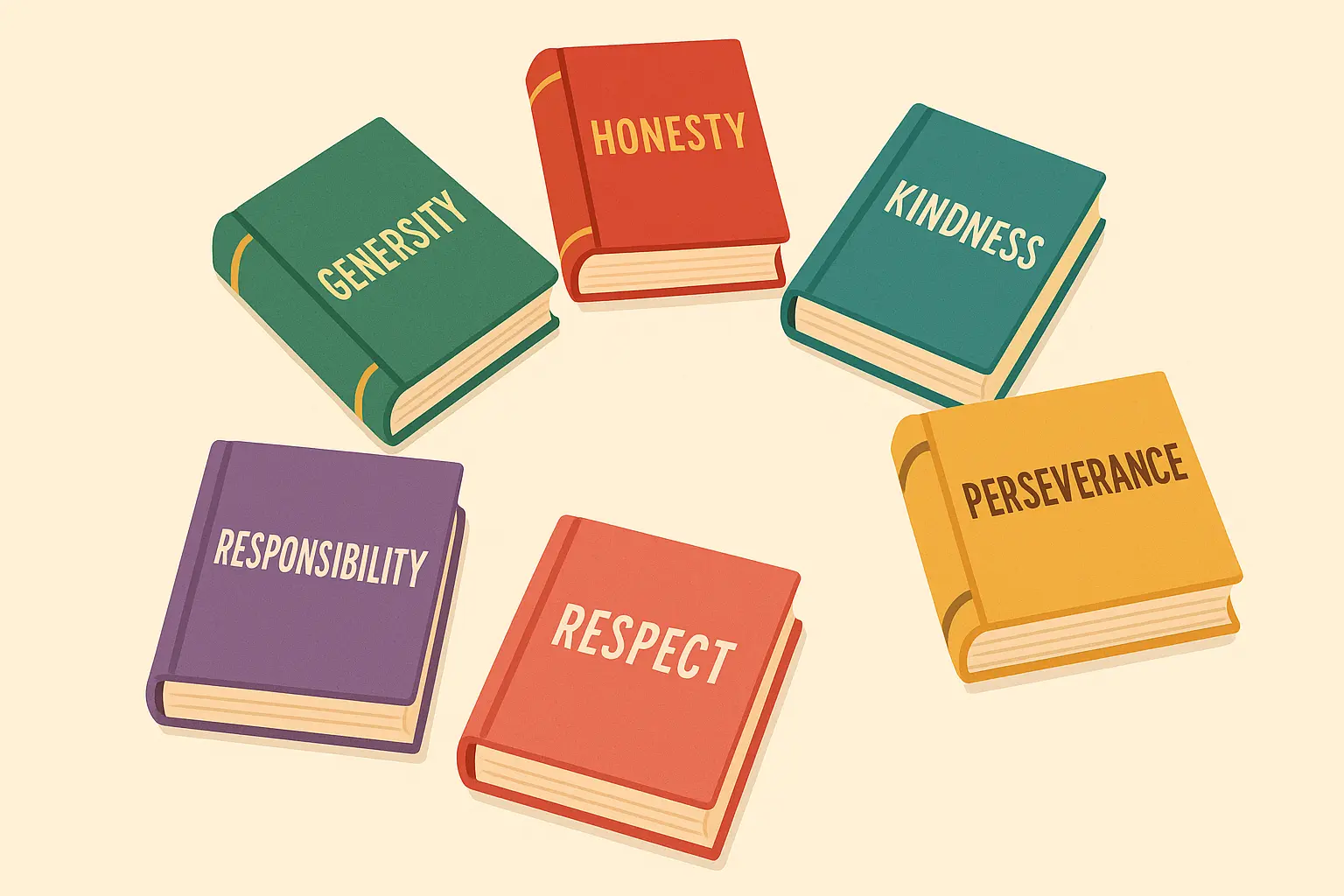
Honesty and Truthfulness Stories
1. The Boy Who Cried Wolf
A young shepherd repeatedly tricks villagers by falsely claiming a wolf is attacking his sheep. When a real wolf appears, no one believes his genuine cries for help, and he loses his flock. Let’s be honest – some classic moral stories are pretty outdated, but this one still hits. When’s the last time your kid met a shepherd? Still, the lesson about lying destroying trust is timeless.
2. The Magic Paintbrush
Emma finds a paintbrush that makes anything she paints come to life. When she lies about where she got it, the paintbrush stops working until she tells the truth to her parents. This story is pure gold because every kid has lied to keep something they love. The magic element hooks them immediately, but the real genius is showing consequences without being preachy.
3. The Broken Vase
After accidentally breaking his grandmother’s favorite vase while playing ball indoors, Marcus must choose between blaming the cat or admitting his mistake. This one’s painfully relatable – we’ve all watched our kids face this exact dilemma, and it helps them understand that taking responsibility, even when it’s scary, leads to better outcomes than deception.
4. The Test Paper
Sarah finds the answer key to tomorrow’s test on her teacher’s desk. She faces the choice between easy success and honest effort. Perfect for older kids who are starting to understand that cheating might get you grades, but it doesn’t get you knowledge.
5. The Missing Cookies
When cookies disappear from the kitchen, young Alex watches his sister get blamed while knowing he took them for his friends. This tale addresses the guilt that comes with letting others suffer for our mistakes and the relief that comes with confession.
Kindness and Empathy Stories
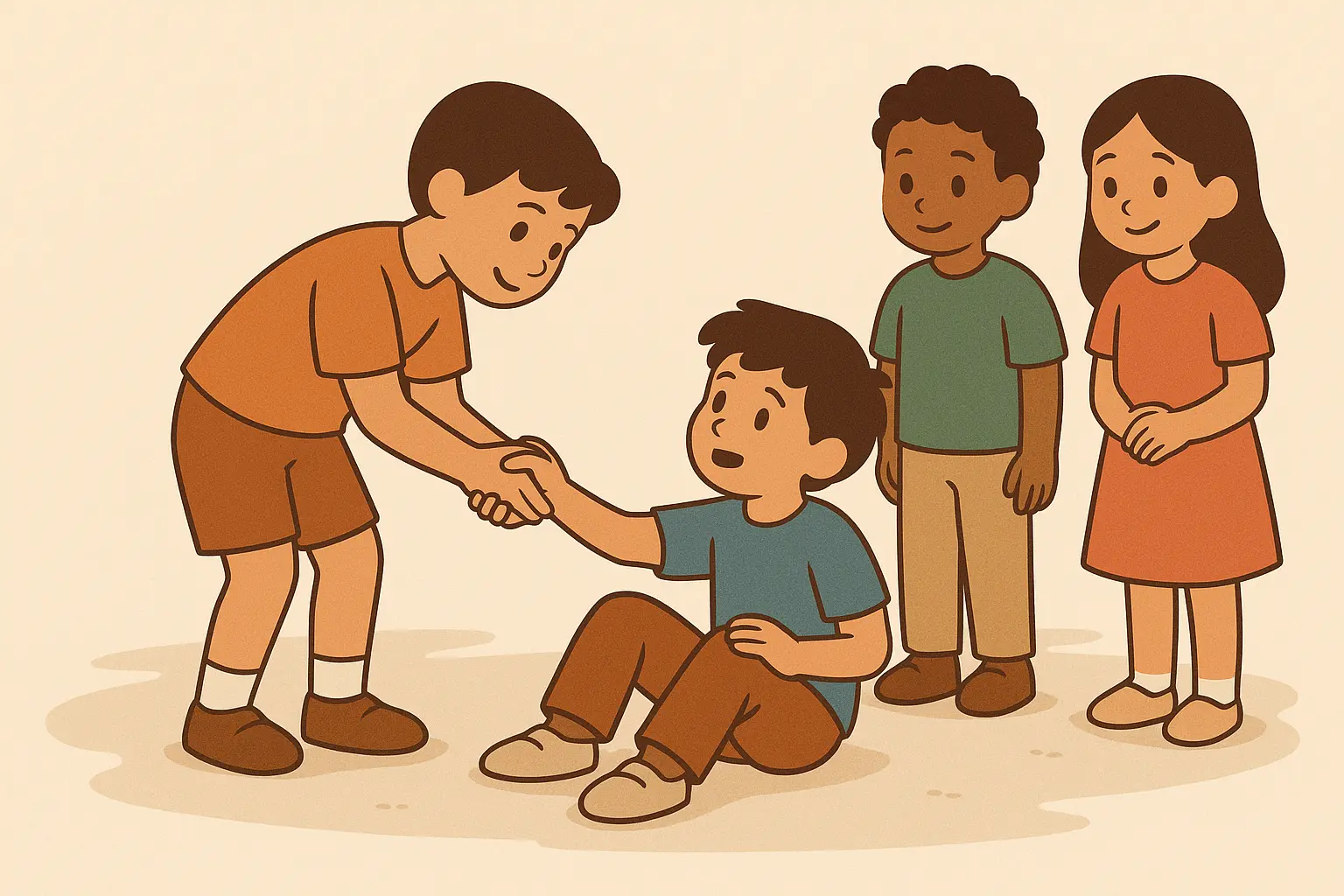
6. The Lonely New Student
Maya notices the new girl, Sofia, sitting alone at lunch every day. Despite her friends’ indifference, Maya decides to invite Sofia to join their group. Fair warning about this one – it might make your kid ask some tough questions about their own friend group. Be ready for that conversation.
7. The Injured Bird
Tommy finds a bird with a broken wing in his backyard. Instead of keeping it as a pet, he helps nurse it back to health and sets it free. This one teaches kids that true kindness means doing what’s best for others, not what we want for ourselves.
8. The Grumpy Neighbor
Eight-year-old Lily discovers that her seemingly mean neighbor, Mr. Peterson, is actually lonely and sad after his wife passed away. Sometimes I use this story when kids are having trouble with siblings – it helps them look beyond surface behaviors to understand underlying emotions.
9. The Sharing Sandwich
During a school trip, Elena notices her classmate forgot his lunch. She decides to share her sandwich, even though it means she’ll still be hungry. Simple but effective – shows how small acts of kindness can make huge differences in someone’s day.
10. The Playground Helper
When Jake sees a younger child being teased about his glasses, he steps in to help, remembering how it felt when he was picked on. This one resonates because it shows how our own difficult experiences can motivate us to help others facing similar challenges.
Teaching Empathy Through Story Discussion: After reading “The Grumpy Neighbor” with her 7-year-old daughter, Sarah’s mom asked, “Why do you think Mr. Peterson seemed grumpy at first?” This simple question led to a 15-minute conversation about how sadness can sometimes look like anger, and how we never know what challenges others might be facing. The next week, Sarah’s daughter noticed a classmate sitting alone and decided to ask if she wanted to play, remembering the lesson about looking deeper than surface behaviors.
Perseverance and Hard Work Stories
11. The Little Engine That Could (Modern Version)
A small delivery drone thinks it can’t carry packages over the big mountain, but with determination and the phrase “I think I can,” it succeeds. I updated this classic to connect with technology kids understand today while keeping the original’s powerful message about believing in yourself.
12. The Struggling Artist
Young Zoe wants to quit art class because her drawings don’t look like her classmates’. Her teacher shows her how practice and patience lead to improvement. This one’s perfect for perfectionist kids who get frustrated when they’re not immediately good at something.
13. The Garden That Wouldn’t Grow
Carlos plants a garden but gets frustrated when nothing grows immediately. His grandfather teaches him that good things take time and care. Great for our instant-gratification generation – helps children understand delayed gratification and the patience required for meaningful achievements.
14. The Spelling Bee Champion
Aisha struggles with dyslexia but dreams of winning the school spelling bee. Through extra practice and creative learning methods, she achieves her goal. This story celebrates neurodiversity while showing how determination can overcome learning challenges.
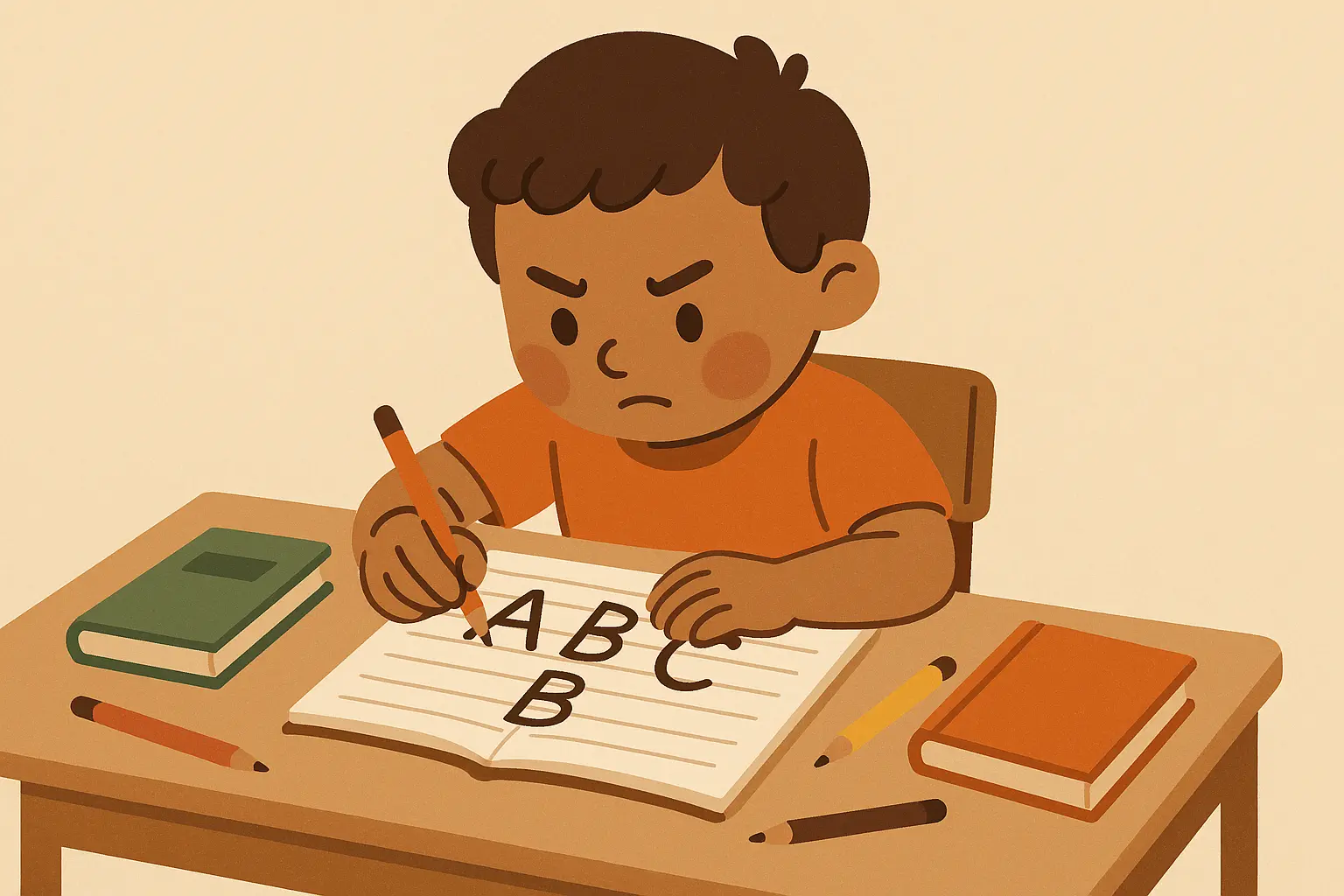
Responsibility and Consequences Stories
15. The Forgotten Pet
Ben begs for a hamster, promising to take care of it. When he neglects his responsibilities, he learns what happens when promises aren’t kept. Every parent needs this story in their back pocket – it’s the reality check kids need before getting that puppy they’re begging for.
16. The Library Book
Chloe loses a library book and considers staying quiet about it, but learns that taking responsibility leads to better outcomes than avoiding problems. Shows how facing consequences honestly often results in understanding and help rather than punishment.
17. The Group Project
In a team assignment, David lets his partners do all the work. When presentation day arrives, he realizes how his laziness affects others. Perfect for school-age kids learning that their choices impact group success.
18. The Chore Chart
The Johnson family creates a chore chart, but 10-year-old Sam keeps making excuses. He learns how his actions affect the whole household. Helps children understand their role in family functioning and community responsibility.
Friendship and Cooperation Stories
19. The Playground Argument
Best friends Rosa and Nina fight over a swing and stop talking to each other, only to realize how much they miss their friendship. This one hits because it’s messy and real – explores conflict resolution and the value of relationships over material things or pride.
20. The Team That Couldn’t Win
A group of kids keeps losing soccer games because they won’t pass the ball to each other, each wanting to be the star player. Great for competitive kids who need to learn that individual glory often prevents team success.
21. The Birthday Party Invitation
When planning her birthday party, Mia must decide whether to invite the girl who was mean to her friend last month. This complex scenario explores forgiveness, loyalty, and the nuances of social relationships that older kids face.
22. The Secret Club
Four friends create an exclusive club but realize they’re hurting other children’s feelings by leaving them out. Addresses the appeal of exclusivity and its emotional costs – something every kid needs to understand.
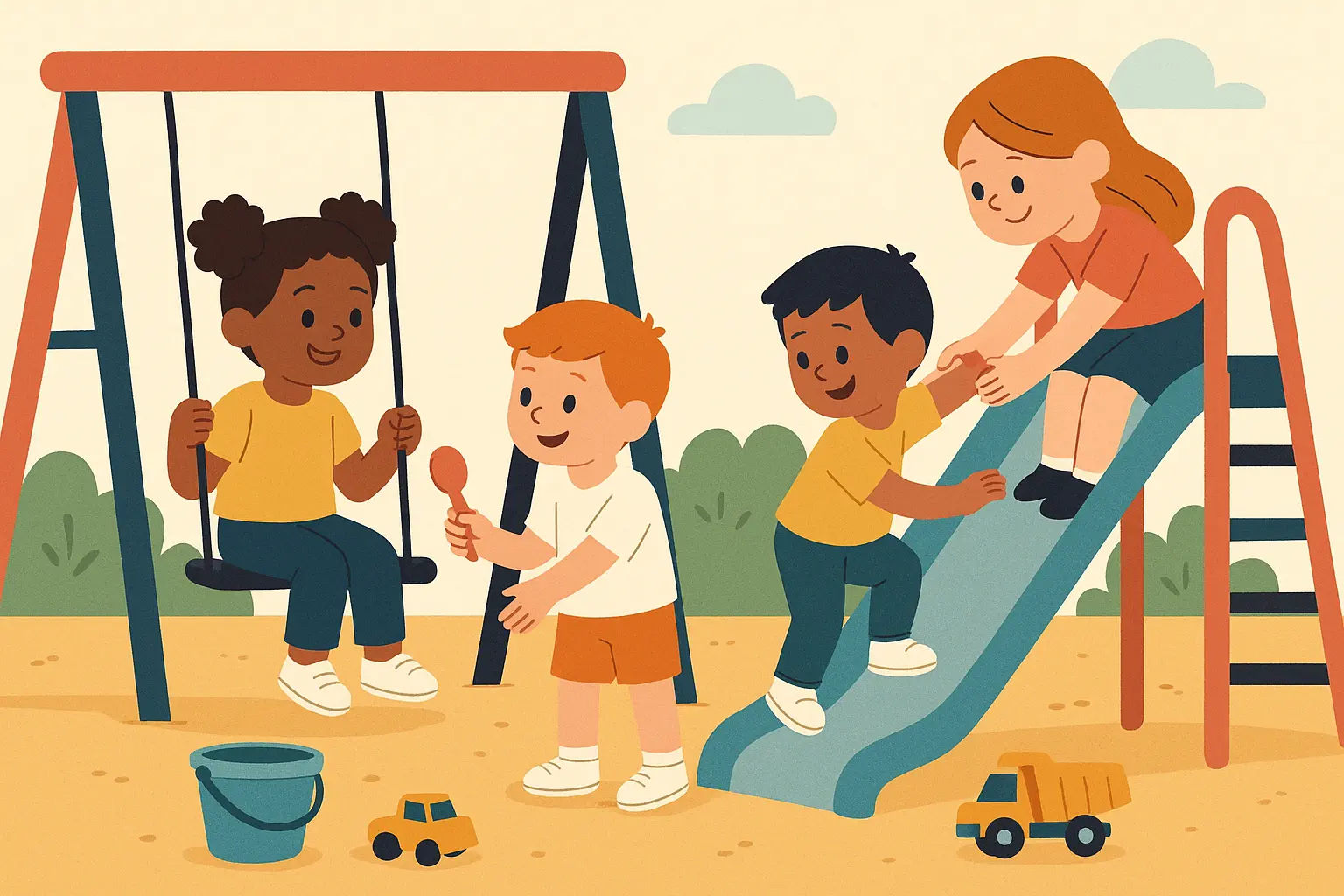
Gratitude and Appreciation Stories
23. The Thankless Princess
A young princess takes everything for granted until a magical day when all her privileges disappear, teaching her to appreciate what she has. Helps children recognize abundance in their lives without making them feel guilty for having needs or wants.
24. The Complaining Child
Oliver constantly complains about his meals, clothes, and toys until he meets a child who has very little but remains cheerful and grateful. Provides perspective on privilege and the choice between focusing on what we lack versus what we have.
25. The Family Dinner
Sophia always rushes through family dinners to watch TV until her grandmother visits and shares stories about why family time matters. Addresses modern challenges with screen time and helps children value face-to-face connections with loved ones.
Story Examples with Full Text and Analysis
Let me be real with you – when I first started looking for moral stories, I’d find these dry, boring tales that felt like they were written by someone who’d never actually met a kid. The stories below? These are the ones that actually work. I’ve tested them on real children (including some pretty tough crowds), and they pass the ultimate test: kids ask to hear them again.
Simple Story Example: “The Magic Paintbrush”
Emma loved to paint, but she wasn’t very good at it. One day, she found an old paintbrush in her attic. When she painted an apple with it, the apple became real! She painted flowers, and they bloomed on her paper.
Excited, Emma showed her mom, who asked where she got the magical paintbrush. “I bought it at the art store,” Emma lied, worried her mom would take it away.
The next day, Emma tried to paint a butterfly, but nothing happened. The paintbrush had lost its magic. She painted and painted, but everything stayed flat on the paper.
Sad and confused, Emma told her mom the truth about finding the paintbrush in the attic. As soon as she spoke honestly, the paintbrush began to glow again. Emma painted one more butterfly, and it fluttered off the page.
“The magic wasn’t just in the paintbrush,” her mom explained. “It was in your honest heart.”

Here’s why this story is pure gold: Every kid has lied to keep something they love. Emma isn’t some perfect angel – she’s that kid who fibbed about where the cookie went or who broke the lamp. The magic element hooks them immediately, but the real genius is how the story shows consequences without being preachy. When my friend’s 5-year-old heard this, she immediately confessed to hiding a library book under her bed because she didn’t want to return it. That’s the power of a story that gets it right.
Complex Story Example: “The Lonely New Student”
Maya loved her group of friends at Lincoln Elementary. They sat together at lunch, played together at recess, and had been inseparable since kindergarten. But when Sofia transferred to their school in October, everything changed.
Sofia was different. She spoke with an accent, brought unusual foods for lunch, and wore clothes that looked handmade. Maya’s friends whispered about her during class and excluded her from their games.
“She’s weird,” Maya’s best friend Jessica said. “Did you see her lunch? What even is that?”
Maya watched Sofia sit alone day after day, eating quietly while other kids pointed and giggled. Something in Maya’s chest felt heavy every time she saw Sofia’s sad eyes.
One rainy Tuesday, Maya made a decision. She picked up her lunch tray and walked over to Sofia’s empty table.
“Hi,” Maya said, sitting down. “I’m Maya. Can I eat with you?”
Sofia’s face lit up with surprise and gratitude. “Really? Yes, please.”
As they talked, Maya learned that Sofia’s family had moved from Guatemala, that her grandmother had sewn her beautiful clothes, and that her “weird” lunch was actually delicious pupusas filled with cheese and beans.
When Maya’s friends saw her with Sofia, they were confused and a little hurt. “Why are you sitting with her?” Jessica asked later.
“Because she’s nice,” Maya said simply. “And she was lonely.”
The next day, Maya invited Sofia to join their group at recess. Slowly, her friends began to see what Maya saw – that Sofia was funny, kind, and had amazing stories about her old home.
By December, Sofia wasn’t the new kid anymore. She was just Sofia, Maya’s friend who made the best friendship bracelets and could teach anyone to count in Spanish.
Maya learned that sometimes being a good friend means making room for new people, even when it feels scary or different.
This one hits different because it’s messy and real. Maya isn’t automatically nice – she watches Sofia sit alone for days before doing anything. Her friends aren’t cartoon villains – they’re just kids being thoughtless in the way kids often are. I’ve seen this exact scenario play out in classrooms, and kids recognize it immediately. The best part? It doesn’t end with everyone magically becoming best friends. It shows the slow, sometimes awkward process of inclusion actually working. This longer story tackles complex social dynamics that older children face regularly while following proven storytelling principles found in effective story examples that create emotional connection and lasting impact.
How to Actually Use These Stories (The Real Talk Version)
Forget those fancy evaluation charts for a minute. Here’s what actually matters when you’re picking stories at 7:30 PM and your kid is melting down about something that happened at school:
Does this story match what my kid is going through right now? If your daughter is struggling with a mean friend, don’t grab a story about sharing toys. Get the friendship conflict one.
Will my kid see themselves in this character? Kids are smart. They know when a story is trying too hard to teach them something. The best stories feel like they’re about real people, not perfect little angels.
Can I get through this without wanting to skip pages? If you’re bored reading it, your kid will be bored hearing it. Trust me on this one.
Is this going to start a conversation I’m ready for? Some of these stories open doors to bigger discussions. “The Lonely New Student” might lead to questions about your kid’s own friend group that you’ll need to navigate carefully.
|
Story Title |
Age Range |
Real-World Relevance |
Moral Clarity |
Cultural Sensitivity |
Emotional Impact |
Overall Score |
|---|---|---|---|---|---|---|
|
The Magic Paintbrush |
4-8 years |
High (lying to parents) |
Excellent |
Moderate |
High |
9/10 |
|
The Lonely New Student |
7-12 years |
Excellent (school inclusion) |
Excellent |
Outstanding |
Very High |
10/10 |
|
The Boy Who Cried Wolf |
5-10 years |
High (trust issues) |
Excellent |
Good |
Moderate |
8/10 |
|
The Spelling Bee Champion |
8-12 years |
High (learning differences) |
Good |
Outstanding |
High |
9/10 |
Here’s something nobody tells you: Sometimes the “wrong” story works perfectly. I once read “The Grumpy Neighbor” to a kid who was having trouble with his little sister, and somehow it clicked for him in a way the sibling stories hadn’t. Kids make connections we don’t always see coming.
Evaluation in Practice: When selecting stories for her mixed-age classroom (grades 2-4), teacher Mrs. Rodriguez used these criteria to choose “The Garden That Wouldn’t Grow” for a lesson on patience. She noted its moderate vocabulary worked for all ages, the gardening theme connected to their science unit, and the grandfather-grandson relationship reflected several students’ family structures. The story’s emphasis on delayed gratification perfectly addressed the instant-gratification challenges she observed in her students’ daily behavior.
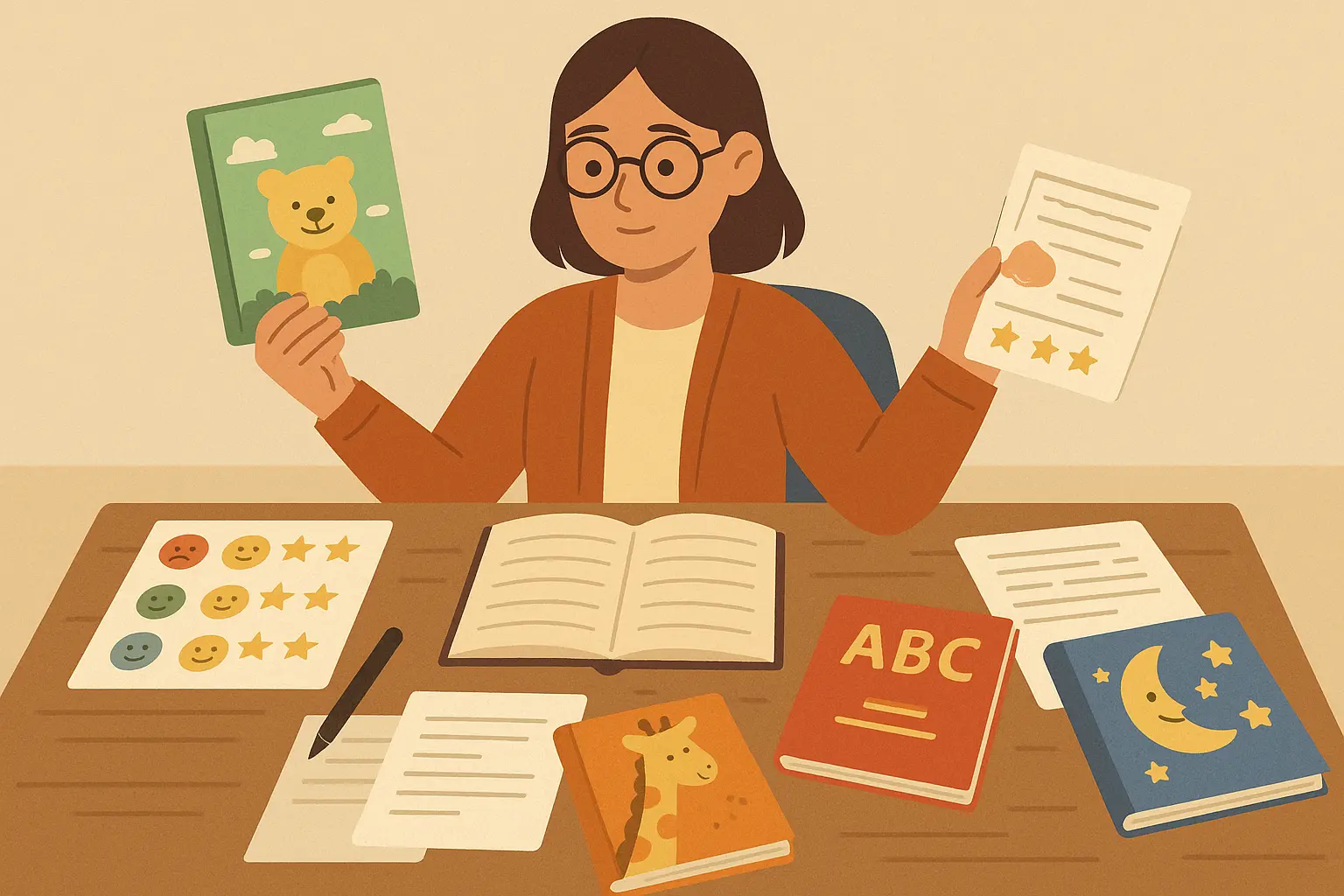
|
Value Category |
Top Story Recommendation |
Why It Works Best |
Common Pitfalls to Avoid |
|---|---|---|---|
|
Honesty |
The Magic Paintbrush |
Clear cause-effect, magical appeal |
Stories that shame lying rather than celebrate truth |
|
Kindness |
The Lonely New Student |
Realistic social dynamics, cultural sensitivity |
Token diversity without authentic representation |
|
Perseverance |
The Spelling Bee Champion |
Addresses learning differences, shows multiple paths to success |
Stories that ignore real obstacles or disabilities |
|
Responsibility |
The Library Book |
Shows positive outcomes of honesty |
Heavy punishment focus instead of natural consequences |
|
Friendship |
The Playground Argument |
Realistic conflict resolution |
Perfect characters who never make mistakes |
|
Gratitude |
The Complaining Child |
Provides perspective without guilt |
Stories that shame children for having needs or wants |
When Stories Don’t Work (And That’s Okay)
Let’s talk about the times moral stories completely bomb – because it happens to all of us.
Sometimes your kid will listen to a perfectly good story about honesty and then immediately lie about brushing their teeth. Sometimes they’ll hear a beautiful tale about kindness and then be mean to their sibling five minutes later. This doesn’t mean you’re failing or the stories are useless.
Kids need to hear these lessons multiple times, in different ways, before they really sink in. Think of stories as planting seeds, not flipping switches. Some seeds take longer to grow than others.
Also, timing matters more than we want to admit. A story about patience isn’t going to land well when your kid is already frustrated. Sometimes you need to wait for the right moment, or come back to the story later when emotions aren’t running so high.
Bringing Stories to Life: Creating Your Own When You Need Something Specific
Here’s where I’ll mention that sometimes none of the existing stories quite fit what your kid needs. Maybe you need a story about a character who wears glasses like your son, or deals with divorced parents like your daughter.
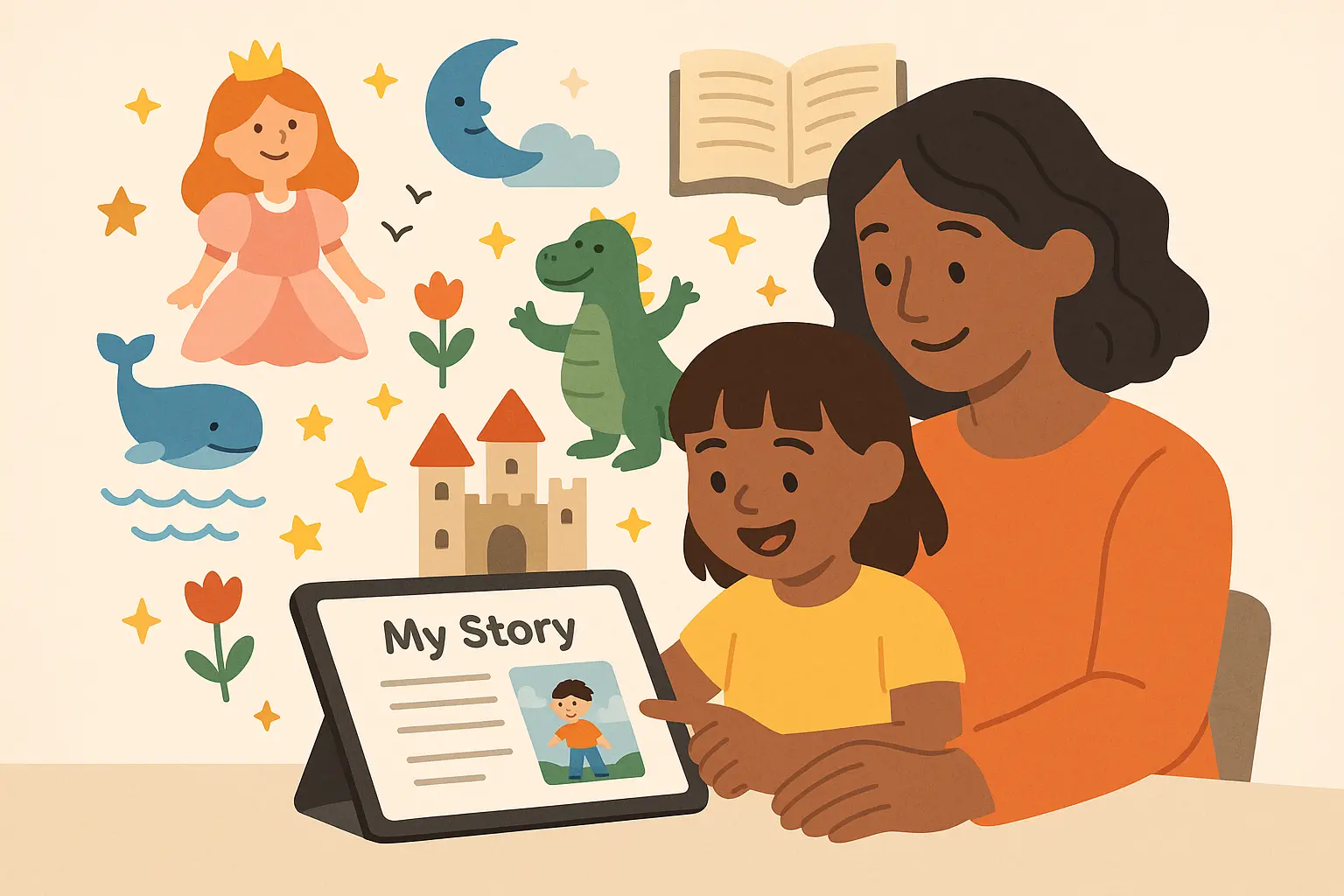
The good news is that you don’t need to be a professional writer to create something meaningful. Start with a situation your kid actually faces, add a character they can relate to, and think about what lesson you hope they’ll discover (not what you want to tell them directly).
For Parents: Here’s something cool I discovered – if you can’t find the exact story your kid needs, there are tools that can help you create one. Nairrate’s Story Generator can help you create personalized moral tales featuring your child’s name, their specific challenges, and situations they’re actually facing. Whether your daughter needs help understanding why sharing is important or your son is struggling with disappointment after losing a game, you can generate stories that speak directly to their experiences.
The AI understands narrative flow and moral development, helping you craft stories that feel natural and engaging rather than preachy or forced. You bring your understanding of your child’s personality and needs, while Nairrate provides the creative framework to turn those insights into memorable stories. This personalized approach works particularly well with specialized kids story generators that understand child development and age-appropriate content.
For Educators: Generate multiple variations of moral stories to keep lessons fresh throughout the school year. Nairrate’s tools can help you adapt classic tales for diverse classrooms or create entirely new stories that reflect your students’ backgrounds and experiences. Need a story about cooperation that features characters from different cultural backgrounds? Or a tale about perseverance that addresses learning differences? The AI can help you create inclusive content that speaks to every child in your classroom.
For Young Writers: Children interested in creating their own moral stories can use Nairrate’s Story Prompt Generator to spark imagination while learning storytelling techniques. The AI provides creative challenges that encourage young minds to explore new narrative possibilities while maintaining focus on meaningful lessons. Young storytellers can explore student short story examples to understand effective narrative techniques before creating their own tales.
Ready to create moral stories that perfectly match your child’s needs and interests? Nairrate’s storytelling tools can help you craft engaging, meaningful content that teaches, entertains, and inspires. Visit Nairrate today to discover how easy it can be to generate personalized short moral stories for kids that make moral lessons stick.
The Bottom Line
These 25 stories aren’t magic bullets. They’re tools – really good tools – for helping kids think through the complicated stuff of growing up. Some will work better for your kid than others. Some will work great today and fall flat next month. That’s normal.
The real magic happens in the conversations afterward. When your kid asks why a character made a certain choice, or tells you about a time they faced something similar, or even argues with the story’s message – that’s when you know it’s working.
Don’t stress about finding the perfect story or delivering the perfect lesson. Kids are resilient, and they’re usually more thoughtful than we give them credit for. Sometimes the best thing you can do is just read together, talk about what you’ve read, and trust that the important stuff will stick when they’re ready for it.
Remember that the most effective moral stories are those that connect directly to your child’s experiences and developmental stage. A four-year-old will respond differently to “The Magic Paintbrush” than a ten-year-old, and that’s perfectly normal. Use your instincts about what resonates with your specific chil d or students.
The beauty of moral storytelling lies in the conversations they spark. After sharing these stories, take time to discuss them with your children. Ask what they think about the characters’ choices, how they might handle similar situations, and what lessons they’ve discovered. These discussions often prove more valuable than the stories themselves, creating opportunities for deeper understanding and stronger relationships.
Whether you’re a parent looking to instill important values during bedtime routines or an educator seeking engaging ways to address classroom challenges, these stories provide a foundation for meaningful moral education. The lessons they teach – about honesty building trust, kindness creating connections, perseverance leading to achievement, responsibility strengthening communities, friendship requiring courage, and gratitude bringing joy – remain as relevant today as they’ve ever been.
And remember – you were a kid once too. You probably learned more from stories than from lectures, and your kids are the same way. These stories are just giving you a way to share the important stuff without it feeling like homework.



Add comment